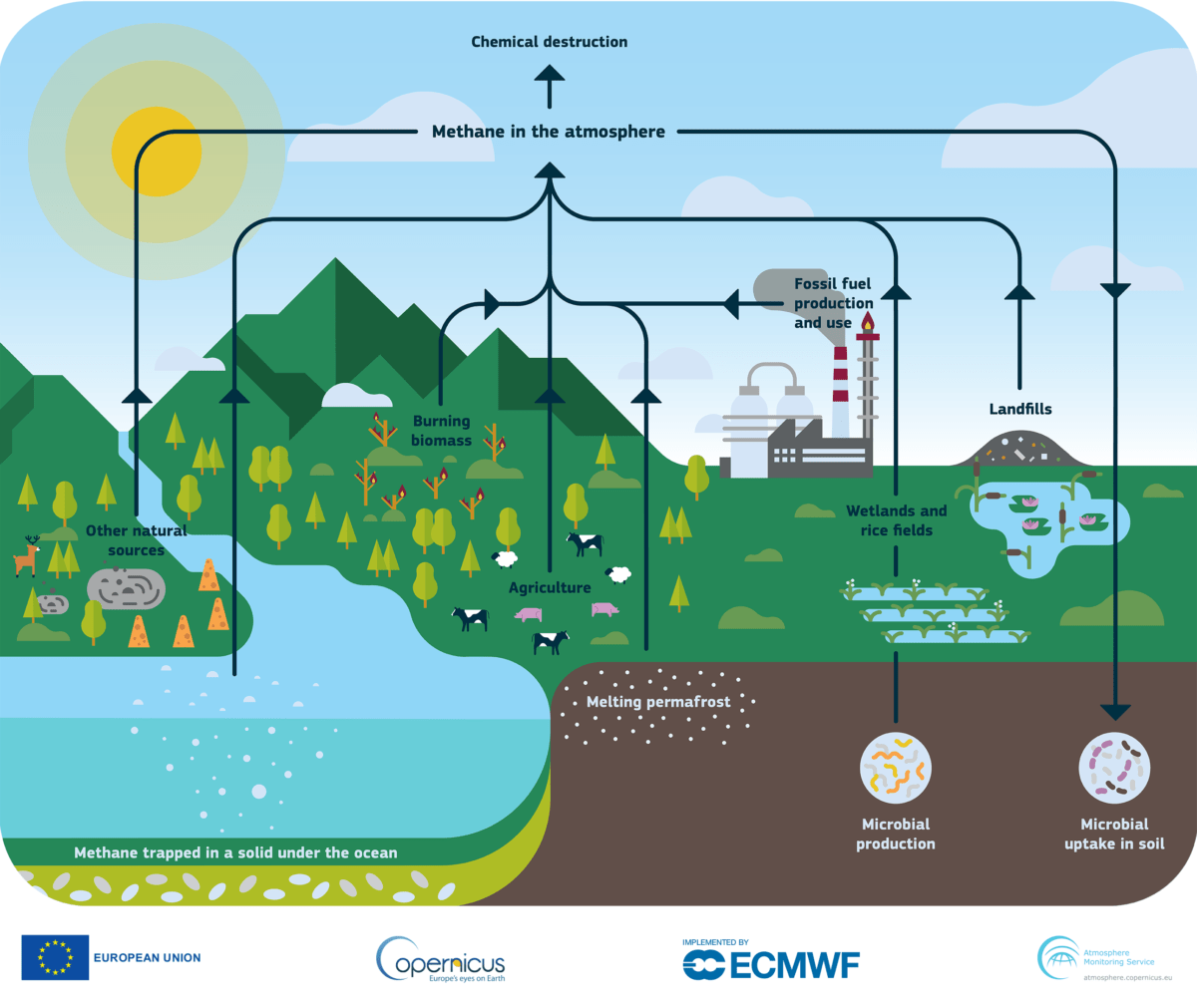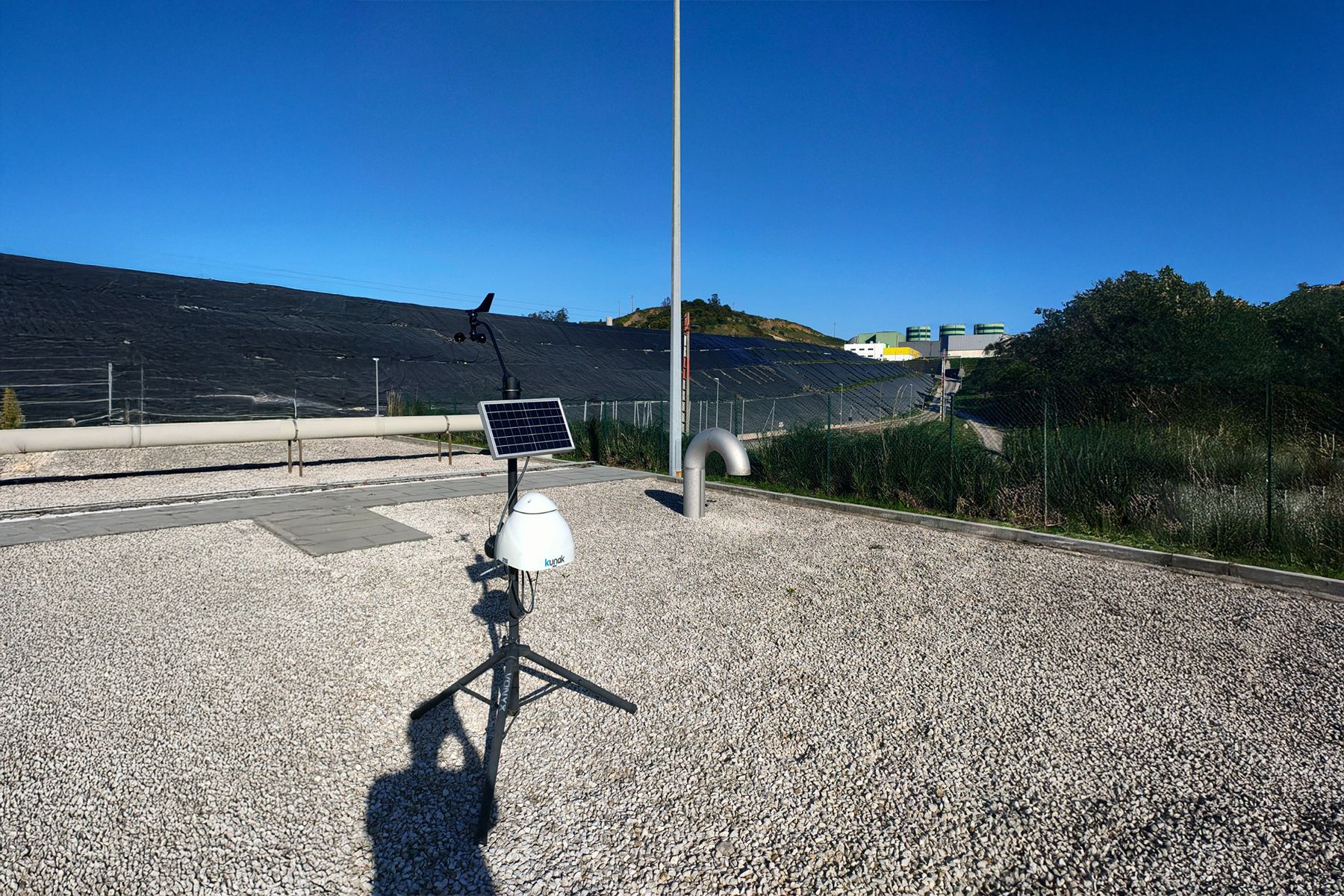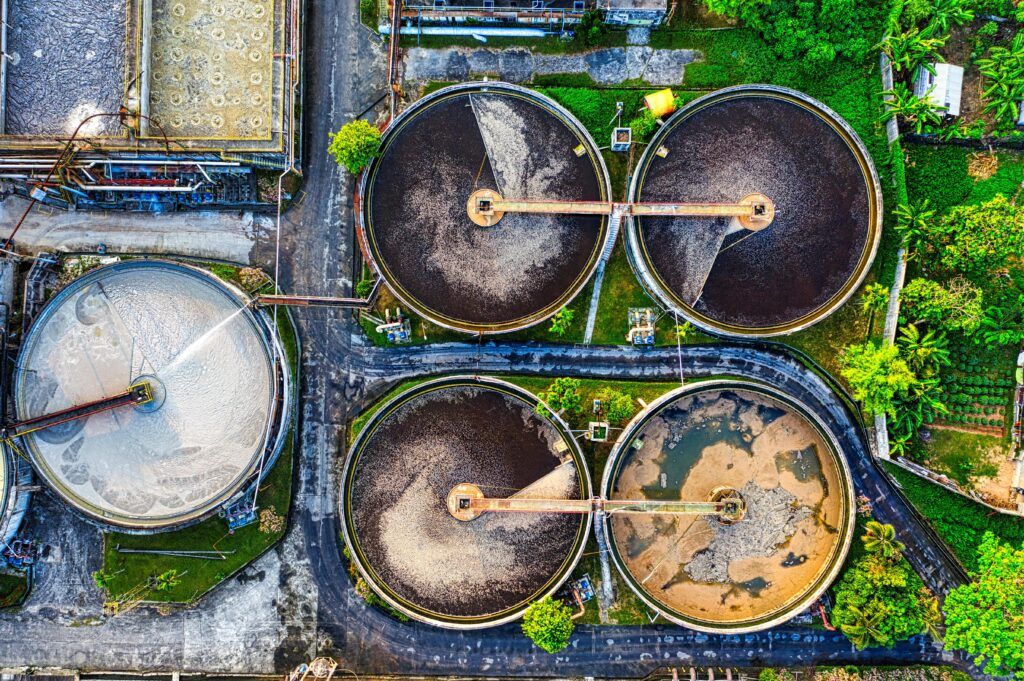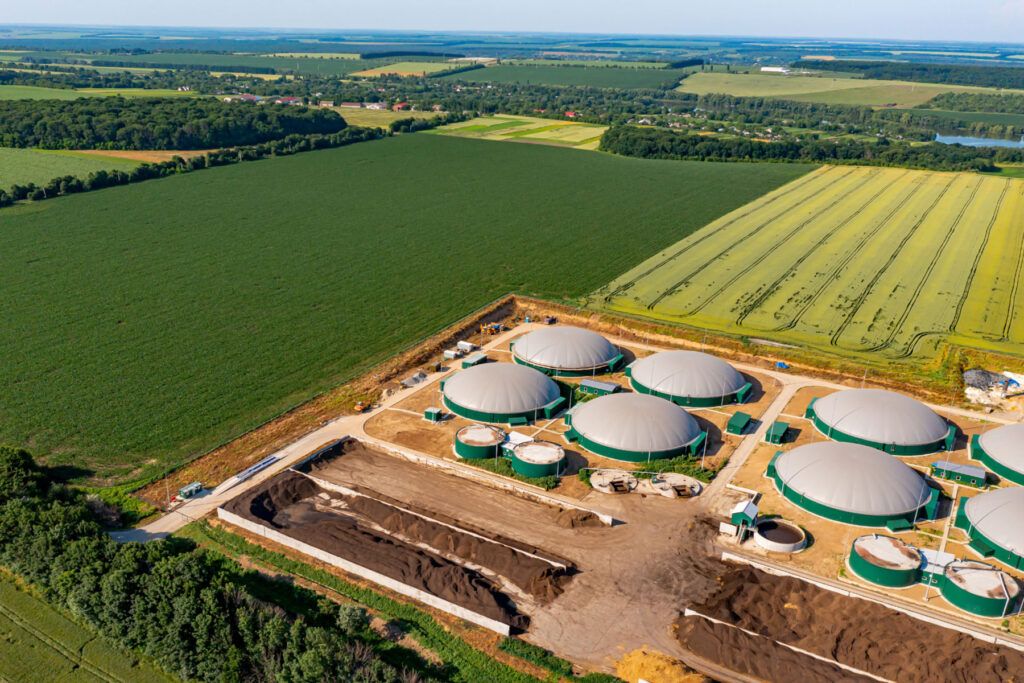Methane leaks into the atmosphere are accelerating global warming, with recent scientific findings revealing a record-breaking increase in the past five years. As Inger Andersen, Executive Director of the UNEP, states, “Governments and oil and gas companies must stop paying lip service to this challenge [of methane leaks], as the solutions are right in front of them. Instead, they should recognize the enormous opportunity this represents and start acting on the warnings by plugging the leaks that release methane into the atmosphere and heat up the climate. The tools are at their disposal, the goals are clear. It’s time to act now!”
Methane (CH₄) is an essential gas on Earth, found in the atmosphere, aquatic environments, and underground. As a hydrocarbon, its simple structure gives it unique properties, consisting of a carbon atom bonded to four hydrogen atoms. This bonding makes it a valuable energy resource but also poses an environmental challenge as a potent greenhouse gas due to its ability to trap heat. It has a detrimental impact on the atmosphere and living organisms, contributing to over 25% of current global warming.
This article explores the composition of methane, its impact on air pollution, and its contribution to climate change. It focuses on strategies to reduce methane emissions and the urgent need for global action to detect and reduce methane in the atmosphere, mitigating its impact to achieve climate goals.
The use of advanced technology for monitoring methane emissions allows for detection and subsequent reduction efforts, which are priorities for mitigating climate change. This will improve air qualityAir quality refers to the state of the air we breathe and its composition in terms of pollutants present in the atmosphere. It is considered good when poll...
Read more, saving hundreds of thousands of lives, and preserving ecosystems for a sustainable future on our planet.
What is methane and why is it so important?
The simplest hydrocarbon, composed solely of carbon and hydrogen molecules (alkane hydrocarbons), is methane. It exists in the atmosphere as a gas, primarily originating from human activities such as livestock farming, the fossil fuel industry, and landfills, as well as from natural sources like wetlands through decomposition in anaerobic environments and volcanic activity.
Air Quality Innovation in Just 1 Click
Stay informed about the air you breathe!
Subscribe to our newsletter to receive the latest updates on environmental monitoring technology, air quality studies, and more.
Understanding how methane forms and identifying its emission sources is crucial for developing effective strategies to detect and control its presence. This helps mitigate its environmental impact while harnessing its potential as an energy source.
Basics of methane: composition and characteristics
Under the temperature and pressure conditions of the atmosphere, methane typically exists as a gas, giving it the unique property of contributing to the transparency of the atmosphere. This allows the sun’s natural energy to reach the Earth as ultraviolet radiation, making the planet habitable.
Methane forms naturally through the anaerobic decomposition of organic matter. This process occurs in human-generated waste, wetlands like swamps and lakes, marine sediments, and the intestines of ruminant animals (and their manure). This process generates what is called natural methane.
The biological process of methane formation is known as methanogenesis, carried out by microorganisms called methanogenic archaea. These microorganisms break down organic matter in oxygen-free (anaerobic) environments, producing methane as a byproduct.
Geological processes also contribute to methane formation in the subsoil, producing natural gas through the thermal decomposition of organic matter buried underground.
Anthropogenic methane originates from activities such as agriculture, livestock farming, solid waste, wastewater, and the production and distribution of fossil fuels.
The anaerobic decomposition of organic waste also generates biogas, where methane (CH₄) comprises 50-70% of its composition. When biogas undergoes purification to remove carbon dioxide (CO₂) and other contaminants, it becomes nearly pure biomethane, with broad applications as a fuel.
Although methane is a colourless, odourless, and insoluble gas, it can become dangerous. At high concentrations, it is highly flammable when combined with air. Additionally, in confined spaces, elevated methane levels displace oxygen, creating a toxic environment that can cause asphyxiation.
Methane pollution facts
Methane remains in the atmosphere for 10–12 years, a significantly shorter time than CO₂ (which lasts thousands of years). However, methane has an 80 times greater impact on the atmosphere than CO₂ over a 20-year period, as it traps infrared radiation emitted from the Earth’s surface. Methane also has 25 times the global warming potential of CO₂ over a 100-year horizon.
The atmospheric concentration of methane has more than doubled over the past 200 years. Scientists estimate that this increase accounts for 20-30% of climate warming since the Industrial Revolution (which began in 1750). Climate NASA.
To combat methane pollution, the global community must leverage advances in air quality technology to monitor and control methane emissions. By acting collectively, we can still take responsibility and achieve global climate goals, thereby protecting life on Earth.
How methane contributes to climate change
Methane’s behaviour in the atmosphere acts as a barrier to thermal infrared energy generated at the Earth’s surface. This trapped heat leads to the greenhouse effect, accelerating global warming.
Since the Industrial Revolution, methane concentrations in the atmosphere have significantly increased. The rise of machines and their role in advancing human activities has driven social, economic, and industrial development without limits. This increase is alarming and presents a global challenge requiring international collaboration to safeguard life on Earth.
While CO₂ is the primary greenhouse gas responsible for driving global warming, methane in the atmosphere is far more damaging in its effects.
Controlling anthropogenic methane sources, along with reducing the use of fossil fuels such as oil, coal, and natural gas, are priority actions to lower methane emissions.
Reducing methane emissions by 45% by 2030 could help achieve the Paris Agreement’s goal of limiting global warming to 1.5°C. (Source: UN Environment Programme)
How methane is produced
The concentration of methane gas in the atmosphere has skyrocketed in recent decades due to industrial development, reaching exceptional levels. This increase is primarily driven by human activities, including agriculture, livestock farming, energy production, and waste management.

Methane Cycle – Copernicus Atmosphere Monitoring Service, ECMWF – Kunak
While less significant than human sources, natural methane emissions also play an important role in atmospheric pollution. The main natural sources of methane emissions include:
Wetlands
Wetlands are the largest natural source of methane. In these ecosystems, microorganisms break down organic matter under anaerobic conditions, releasing methane. Wetlands account for approximately 30% of global methane emissions into the atmosphere.
Thawing permafrost
The rising temperatures caused by global warming are thawing the permafrost—permanently frozen soil in the Arctic. This process releases methane trapped in the subsurface for thousands of years.
This phenomenon is occurring most notably in Arctic regions such as Siberia and Alaska. The process accelerates a feedback loop: as temperatures rise, more methane is released from the permafrost, further intensifying global warming.
Geological sources
Natural methane emissions originating from Earth’s processes, unrelated to human activities, are known as geological sources.
Though less understood than anthropogenic sources, they play a crucial role in the global methane cycle. Methane can escape from the depths of the subsurface via fractures in the Earth’s crust, geological faults, or surface cracks. Underwater volcanoes and tectonic activity also contribute to methane emissions, such as in the Gulf of Mexico.
Natural gas deposits, of which methane is a primary component, can also emit methane into the atmosphere through cracks or tectonic movements.
Additionally, the seafloor contains areas where methane ascends from hydrocarbon deposits deep within the seabed. Methanotrophic bacteria in the water consume part of this methane before it reaches the atmosphere. This phenomenon occurs on a large scale in the East Siberian Sea.
Wildlife
Methane emissions from wild animals, such as ruminants, occur naturally due to their herbivorous diet. These animals possess a specialised digestive process for breaking down plant matter and cellulose, which produces methane as a by-product.
Although wild ruminants emit less methane than domesticated livestock, both contribute to the natural presence of methane in the atmosphere.
Human activities responsible for methane emissions
A significant portion of the methane gas present in the atmosphere originates from human activities, known as anthropogenic methane. The primary sources are:
Agriculture and livestock
The digestion process of ruminant animals in the livestock industry generates methane gas. Similarly, the decomposition of agricultural residues under anaerobic conditions produces large quantities of methane. Rice paddies, during their flooded periods, create ideal anaerobic conditions for microbes to break down organic matter, releasing methane in the process.
Production and use of fossil fuels
The use of fossil fuels, such as oil, coal, and natural gas, generates substantial methane emissions at various stages, from extraction to distribution and storage systems. During these processes, fugitive methane emissions escape into the air through activities like extraction, refining, and transportation via distribution networks.
Methane leaks from fossil fuels represent a major threat to the global climate. While less visible than CO₂, methane’s climatic impact is significant due to its higher global warming potential. Monitoring leaks, reducing emissions, and capturing methane in the fossil fuel industry are crucial actions to mitigate its impact on climate change.
A study by the Global Carbon Project estimated that “methane leaks from the oil and gas industry in 2020 reached around 70 million metric tons, equivalent to 2.1 gigatonnes of CO₂ in terms of climate impact”.

Landfill management – image credit Powerknot – Kunak
Landfills and waste management
Landfills are one of the largest anthropogenic sources of methane emissions, due to the anaerobic decomposition of organic matter. However, implementing biogas capture systems, composting, anaerobic digestion, and waste reduction can help mitigate these emissions and utilise methane as a source of renewable energy, contributing to the fight against climate change.
Biomass burning
This process involves the combustion of organic material, such as wood, agricultural residues, or vegetation. Depending on the conditions, the type of biomass, and the environment, it can directly or indirectly contribute to methane production.
Biomass burning occurs in two main contexts:
- Natural burning, such as wildfires in forests, savannahs, grasslands, and peatlands.
- Anthropogenic burning, which includes controlled burning of crops, agricultural residues, or the use of biomass as a fuel source for cooking, heating, or energy generation.
When biomass burning is complete, it predominantly produces carbon dioxide and water. However, incomplete combustion results in the formation of other gases and particles, including methane, carbon monoxide (CO)The carbon monoxide (CO) is an invisible gas (colorless and odorless) that, at the same time, is a silent killer because in just a few minutes it exhibits ...
Read more, and black carbon.
Methane gas emissions by source
Urbanisation and the growth of cities have multiplied the sources of anthropogenic methane, driven by the increased generation of solid waste and wastewater and a higher global demand for energy and food.
Methane emissions from the agriculture and livestock sectors are of significant global concern due to their large share of global emissions and the challenges associated with mitigating them. Monitoring methane levels in the air through specialised sensors is a vital resource for achieving climate objectives, given the high global warming potential of methane.
According to the World Bank, methane accounts for approximately 19% of global greenhouse gas emissions. Of this, rice production contributes 8%, livestock accounts for 32%, and waste represents 18% of all human-caused methane emissions.
Methane emissions in agriculture
According to the World Bank, methane emissions from agricultural activities constitute around 41% of anthropogenic methane, primarily stemming from rice cultivation and the burning of agricultural residues.
Methane emissions in livestock
Domesticated ruminants, such as cows and sheep, produce methane through a digestive process called enteric fermentation, which releases methane directly within their intestines and during manure management.
Methane emissions in oil and natural gas extraction
Industrial activities related to fossil fuels are a significant source of methane emissions into the atmosphere. These emissions occur during the extraction, processing, storage, transportation, and distribution of natural gas. In the case of crude oil, methane emissions arise during production, refining, and storage.
Methane pollution in the fossil fuel industry primarily stems from leaks during these processes. Collectively, these activities are responsible for approximately 25-30% of global anthropogenic methane emissions. As a result, the energy sector is investing in emission monitoring technologies and new methods to reduce methane emissions, aiming to mitigate their environmental impact.
Methane emissions in landfills
The storage and management of human-generated waste is the third-largest global source of methane emissions. Methane production occurs during the management and treatment of urban wastewater, as a result of the anaerobic decomposition of organic waste.
According to the Global Methane Initiative, most developed countries rely on centralised aerobic treatment systems that collect and treat wastewater, producing small amounts of methane. However, these systems also generate large quantities of biosolids that could lead to high levels of methane emissions.
In contrast, developing countries often lack adequate wastewater collection and treatment systems. When such systems are in place, they tend to be anaerobic, leading to an increase in methane emissions into the atmosphere.
Methane emissions in industry
The industrial sector also contributes to methane emissions, particularly through processes that either use or produce methane as a by-product. For instance, the production of methanol and ammonia, among other chemical compounds, can release methane into the environment. Similarly, coal mining emits methane as a by-product during mineral extraction.
Emissions from biogas combustion
The burning of biogas or biomethane emits both CO₂ and methane derived from natural gas reservoirs. However, unlike fossil-derived methane, biogas is biological in origin. Although it shares the same chemical composition as fossil methane, biogas originates from the controlled decomposition of organic matter, which is already part of the natural carbon cycle.
During the formation of this organic matter, plants absorb CO₂ from the atmosphere. When these plant remains decompose in landfills or waste treatment plants, they produce biogas, which can later be used as a fuel. When energy is generated from biogas, the CO₂ previously absorbed by the plants is released back into the atmosphere in the same proportion.
This process can occur continuously without adding additional CO₂ to the atmosphere, provided that CO₂ emissions are monitored and controlled to ensure a net-zero balance. Over time, it is essential to equate the CO₂ absorption by raw materials with the combustion of biogas and the release of an equivalent amount of CO₂ to prevent any increase in this potent greenhouse gas.
In this balance, consideration must also be given to the different organic materials from which the biomass, and subsequently biogas, is derived. Using waste organic matter, such as manure, wood residues, and sludge from water treatment plants, is not the same as cultivating crops like sugarcane, maize, sorghum, clover, alfalfa, and palm, which are grown exclusively for biomass production.
If these crops are not grown on marginal lands, they may lead to changes in agricultural land use, creating a significant social equity challenge by displacing food crops. Additionally, the establishment of these crops poses environmental risks to ecosystems and biodiversity, which play a crucial role in capturing atmospheric carbon. The demand for larger biomass production areas may result in the destruction of fertile lands, leading to the loss of biodiversity and essential ecosystem services while significantly increasing greenhouse gas emissions.
The combustion of biomethane not only produces CO₂ but also other atmospheric pollutants, such as NOₓ (which contributes to acid rain and tropospheric ozone formation), PM10 and PM2.5 (which cause severe respiratory health problems), and carbon monoxide (CO) in cases of incomplete combustion.
However, while biomethane as a fuel emits these pollutants, the levels are significantly lower than those produced by traditional fossil fuels.
In contrast, using natural gas as an energy source releases not only these pollutants but also new CO₂ molecules into the atmosphere, further contributing to the rise in this potent greenhouse gas.

Methane Cycle – Encyclopaedia Britannica
Effects of methane pollution
The critical role that methane plays in atmospheric pollution stems from its status as one of the most potent greenhouse gasesWhile the concentration of carbon dioxide (CO2) in the atmosphere has been steadily and rapidly increasing in recent decades, in May 2025, CO2 surpassed 43...
Read more. While less abundant than CO₂, its ability to trap heat in the atmosphere—over 25 times more powerful than carbon dioxide over a 100-year period—makes it a dangerous driver of global warming.
Methane also contributes to a devastating environmental impact by aiding in the formation of tropospheric ozone or smogSmog, beyond that dense fog
Smog is a mixture of air pollutantsAir pollution caused by atmospheric contaminants is one of the most critical and complex environmental problems we face today, both because of its global r...
Read more that accumulate in the atmosphere, especially in urban areas. This phenomenon is character...
Read more, harming both humans and ecosystems.
Addressing the global challenge of reducing methane emissions requires urgent monitoring. Detecting its emissions and reducing its presence is essential to advancing climate goals and protecting human health and ecosystems.
Effects of methane pollution on the atmosphere
Due to its capacity to absorb more thermal energy than CO₂, methane significantly influences global warming. Even though its atmospheric lifespan is relatively short (around 10–12 years), its impact during this time is intense.
Timely detection of methane through air quality monitoringControlling air quality is an essential task in order to enjoy optimal environmental conditions for healthy human development and to keep the environment i...
Read more is critical. Methane emissions, when interacting with other atmospheric pollutants like nitrogen oxides (NOₓ) or volatile organic compounds (VOCs), accelerate the formation of tropospheric ozone. This harmful ozone at ground level directly affects human health and crop yields.
Additionally, methane disrupts the chemical balance of the atmosphere by altering hydroxyl radicals (OH), which are essential for breaking down other atmospheric pollutants.
Effects of methane pollution on humans
While methane in outdoor air is not toxic to humans, it plays a triggering role in the formation of tropospheric ozone, contributing to public health issues such as respiratory and cardiovascular diseases.
By contributing to global warming, methane emissions exacerbate extreme weather events such as wildfires, heatwaves, droughts, and torrential rains, which impact both the environment and human well-being.
Short-term health effects of methane
Methane-induced tropospheric ozone can irritate the respiratory system and cause eye and nasal congestion. Breathing in ozone-rich environments increases the risk of developing asthma, bronchitis, and other respiratory conditions. Even those without pre-existing conditions may experience difficulty breathing outdoors.
Long-term health effects of methane
Prolonged exposure to environments with high levels of tropospheric ozone increases the risk of chronic respiratory diseases, such as emphysema and chronic obstructive pulmonary disease (COPD).
Research has also linked elevated levels of atmospheric pollutants, caused by methane, to increased heart attacks and cardiovascular incidents.
For children living in chronically polluted areas, exposure to poor air quality can hinder proper lung development, leaving them more vulnerable to respiratory illnesses throughout their lives.
Methane’s role in global warming and climate systems
As already mentioned, methane emissions contribute to the greenhouse effect by over 25%. This is due to the methane’s powerful ability to enhance the warming of the atmosphere by absorbing infrared radiation, preventing heat produced at the Earth’s surface from escaping into space. This phenomenon accelerates polar ice melting, which in turn releases the methane trapped in the ice. This further accelerates climate change and promotes the consequent sea-level rise, along with the human welfare damages it implies.
The increase in global temperature, driven by the activating effect of methane emissions, fosters more intense and frequent extreme weather events. Droughts and torrential rainfall become more severe and frequent, linked to shifts in climate patterns.
In summary, the presence of methane in the atmosphere must be addressed globally and effectively, and timely detection of methane is essential. Methane sensors that monitor the air facilitate precise actions to reduce and prevent its presence in the atmosphere.
Reducing global methane emissions, with a particular focus on the key sectors where it is most prevalent, will mitigate the dangerous climate change-accelerating effect of the gas. It will also improve air quality by preventing the formation of other harmful atmospheric pollutants, such as ground-level ozone, which jeopardises human health, especially for the most vulnerable (children, the elderly, and pregnant women), and deteriorates the natural conditions of ecosystems.
Global and regional perspectives on methane pollution
The pollution caused by methane emissions is a global issue that requires urgent action due to its powerful impact on climate change. Methane emissions, both from natural sources and anthropogenic activities, significantly contribute to the increase of greenhouse gases, driving substantial climate changes on a planetary level.
Depending on the activities predominant in each region (such as industrial processes, agricultural practices, fossil fuel use, livestock farming, and solid and liquid waste management systems), methane emissions are increasing worldwide.
While countries like the USA, where livestock farming is one of the main sources of global methane emissions, contribute significantly, regions like the Middle East and Russia see substantial methane emissions from the significant number of industries involved in the processing, storage, and transportation of fossil fuels.
These disparities in methane source origin are key to developing strategic actions that enable methane sensors in air quality monitoring stations to detect precisely when methane emissions occur or when their levels exceed established thresholds. Only through international cooperation, aligning methane reduction policies, will it be possible to adequately assess the proportion of methane reaching the atmosphere and implement global strategies to meet objectives aimed at mitigating global warming.
This is a priority action due to the global environmental alert it represents, requiring collective efforts from not only the productive sectors but also governments and communities. Technological innovations, such as advanced methane leak detection sensors (like those offered by Kunak) and technologies for its capture, make initiatives like the Global Methane Pledge (GMP) viable. This pledge aims for a 30% reduction in methane emissions by 2030, which would result in a 0.2°C decrease in global temperature by 2050.
According to the Global Methane Assessment by the Climate and Clean Air Coalition (CCAC) and the United Nations Environment Programme (UNEP) achieving the temperature reduction target would prevent over 200,000 premature deaths, hundreds of thousands of asthma-related emergency visits, and more than 20 million tonnes of crop losses per year by 2030.
The Global Methane Pledge (GMP) was launched during COP26 in 2021 by the Climate and Clean Air Coalition (CCAC) of the United States and the European Commission. The GMP now has over 155 countries signed up, representing 80% of the global economy and nations capable of controlling approximately 50% of anthropogenic methane emissions worldwide.
Methane emissions in the United States
The main sources of methane emissions in the United States are the energy production and distribution, agriculture, and wastewater and solid waste treatment sectors.
Methane emissions in India
In India, there is significant concern regarding methane emissions due to the country’s agricultural-based economy, which is a major contributor of methane, especially from rice cultivation. Livestock farming also contributes to methane emissions, as India has the largest livestock sector in the world. Additionally, India’s inadequate waste management infrastructure adds to the global methane balance, given the limited resources available for waste treatment.
India also significantly contributes to global methane levels due to its mining activity, being one of the world’s largest coal producers. Methane is released from the underground coal mines. As a natural gas producer, although India’s output is smaller, methane is also emitted during extraction and distribution.
Methane emissions in Europe
Methane emissions in Europe primarily originate from the agriculture, waste management, and energy sectors.
According to the European Environment Agency, 53% of methane emissions in the EU come from agriculture, 26% from waste management, and 19% from energy resources such as the production and distribution of fossil fuels and underground coal mining.
Global trends in methane pollution
Many countries and international organizations are implementing strict policies to control and reduce both natural and anthropogenic methane emissions. Monitoring and reducing methane is a strategic goal to mitigate short-term climate change.
The global trend shows continuous increase in methane emissions. In 2021, atmospheric methane concentrations reached record levels, exceeding 1,900 parts per billion (ppb), a significant rise from pre-industrial levels (~720 ppb).
According to the Global Methane Budget, methane emissions have been steadily increasing since the early 21st century.
The primary causes driving the alarming increase in methane emissions include the expansion of intensive agriculture and livestock farming, driven by the demand for food, increased production of fossil fuels, leading to methane leaks. Additionally, climate pattern changes that accelerate global warming contribute directly to permafrost thawing and intensified methane emissions from wetlands.
Solutions to methane pollution
The difficulty in detecting methane leaks and regulating them, because it is challenging to quantify—given that they are generally fugitive emissions like those arising from fossil fuel production—is the true challenge of methane pollution.
However, reducing methane emissions is an urgent issue due to the significant role this pollutant plays in climate change.
Efforts are focused on improving the efficiency of agricultural practices, updating wastewater and solid waste treatment systems, and implementing stricter regulatory measures in the fossil fuel industries. Only through a joint approach, considering both natural and anthropogenic methane sources, is it possible to measure and properly regulate methane levels.
Reducing the proportion of methane in the atmosphere will benefit air quality and contribute to preserving a healthy and sustainable environment.
If the anthropogenic activities generating methane continue as they are today, the increase in methane will not only threaten climate stability but also life on Earth. On the other hand, methane’s relatively short atmospheric lifetime (a maximum of 12 years) offers an exceptional opportunity to act quickly in climate change mitigation through its precise and monitored regulation.
Through a global approach and international commitment, it will be possible to reduce emissions from essential productive sectors like agriculture and energy production. Proper management, through monitoring and controlling emissions in waste treatment systems, alongside the use of advanced methane measurement and capture technology in the air, supported by stricter policies, will reduce global methane emissions and ensure a future for life on the planet.
How to reduce methane emissions in agriculture
Reducing methane emissions in agriculture will lead to significant progress in controlling the gas, as this sector accounts for approximately 40% of global anthropogenic methane emissions, primarily due to enteric fermentation in livestock and manure management.
Among the most developed measures to reduce these methane emissions is targeting livestock digestion (enteric fermentation) through dietary improvements. Feeds are introduced that inhibit methane-producing bacteria (methanogenic bacteria). Along with reducing fiber and increasing healthy plant-based fats, these feeds become more digestible, requiring less fermentation in ruminant digestive systems.
Genetic improvements in livestock will contribute to long-term methane reduction, as will improvements in grazing systems with rotational practices and the planting of more nutritious foods like certain legumes (clover and alfalfa).
In manure management, apart from aerobic composting and solid separation which reduce methane emissions, methane is captured using anaerobic digesters that convert it into biogas, thus preventing the release of 60% of methane into the atmosphere.
Rice cultivation improvements, with reduced methane emissions from flooded fields, include optimizing water management through intermittent irrigation and early drainage, as well as the inclusion of genetically improved rice varieties. Other techniques, such as the application of methanotrophic microorganisms, which consume methane present in the soil, also contribute to reducing methane levels in the atmosphere.
Advanced methane control technology, such as air monitoring sensors, allows both leaks and high methane emission points to be detected in real-time at agricultural facilities. Data collected from these monitoring systems detects emissions and analyzes their patterns to optimize agricultural practices, reducing their environmental impact.
How to reduce methane emissions in the fossil fuel industry
Reducing methane emissions from the fossil fuel industry is a key factor regarding the presence of methane in the atmosphere, as it accounts for 35% of anthropogenic methane emissions.

A methane plume at least 3 miles (4.8 kilometers) long billows into the atmosphere south of Tehran, Iran. The plume, detected by NASA’s Earth Surface Mineral Dust Source Investigation mission, comes from a major landfill, where methane is a byproduct of decomposition. Credits: NASA/JPL-Caltech
The oil and gas industry, in particular, is a major source of methane pollution, as leaks and venting from wells, pipelines, and storage facilities release large quantities of methane into the air. These emissions not only contribute to global warming but also degrade air quality by increasing levels of volatile organic compounds and nitrogen oxides, both precursors to tropospheric ozone.
Actions should focus on oil extraction and processing, as this is where most fugitive methane emissions occur. The transport of oil and natural gas via pipelines, compression stations, and storage is another significant source of fugitive emissions.
Advanced monitoring technologies using methane sensors at facilities enable the implementation of regular leak detection and repair programs to identify and seal fugitive emissions. Their efficiency allows for a reduction of emissions by up to 90% at facilities experiencing recurring leaks, along with cost savings from anomaly detection in processes.
Leak Detection and Repair Systems (LDAR) rely on infrared sensors to detect methane leaks in real-time. Satellites such as GHGSat and MethaneSAT are designed to monitor greenhouse gas emissions, including methane, from space. These advanced tools are revolutionising the way methane emissions are detected, identified, and managed, thus contributing to climate change mitigation.
Among the emerging technologies is the modernisation of oil refinery flares and flaring (efficient burners) through the combustion of non-recoverable methane, converting it into carbon dioxide and thereby reducing the impact of methane on climate change.
Regarding methane recovery, technologies are focused on the capture and reuse of methane, alongside carbon dioxide, in industrial facilities. The implementation of these technological improvements and best practices available for the optimisation of the fossil fuel industry, supported by strict regulations, could reduce methane emissions by up to 80%. This improvement will primarily affect energy efficiency, with low carbon emissions, and its value chain; globally contributing to the mitigation of climate change.
How to improve waste management techniques to reduce methane emissions
Waste management is a significant source of methane emissions due to the anaerobic decomposition of organic materials that occurs in landfills and the improper management of wastewater. Reducing these emissions requires the adoption of advanced practices that promote the capture, reuse, and minimisation of organic waste.
Separation and recycling is key to reducing the presence of organic waste in landfills. This waste is treated through composting and biodigestion processes instead of being sent to landfills. Furthermore, this processing enhances the value chain as it is used to produce fertilisers, animal feed, or converted into reusable materials.
Landfills already capture and utilise biogas generated by waste, which is then used as a renewable energy source, whether for generating electricity, heat, or fuel. Inactive landfills must be properly sealed to limit anaerobic conditions and methane leaks.
As wastewater treatment plants and septic tanks generate significant amounts of methane, it is essential to modernise these facilities and use biodigesters that capture methane, converting it into biogas.

Landfill sealing with advanced membranes – Photo credit Genap – Kunak
In all these waste facilities, methane gas sensors are essential. This advanced technology detects and measures this pollutant in real time to improve waste management, as demonstrated by the Cerro Patacón landfill near Panama City, thanks to Kunak technology. The data provided by the sensors allows for the analysis of emissions and the optimisation of control operations by capturing and managing them according to the amount and origin of the landfill waste.
Improvements in waste treatment practices can reduce methane emissions by 70%. Additionally, it produces renewable energy through biogas generation, improves air quality, reduces bad odours, and promotes the circular economy.
What are the innovations in methane capture and utilisation
The capture and utilisation of methane have notably advanced, supported by technological, scientific, and operational innovations. With these advancements, not only can methane emissions to the atmosphere be reduced, but this gas can also be turned into a valuable source of energy. These solutions are being applied to sectors such as oil, gas, agriculture, landfills, and wastewater treatment.
The key step involves developing efficient technologies that are adaptable to each productive sector to prevent this potent greenhouse gas from reaching the atmosphere. This ranges from the detection of methane at the source of production, using methane sensors that detect fugitive emissions from industrial plants, pipelines, and landfills, to satellite systems that monitor methane from space, identifying emission sources precisely.
Modern capture technology is based on innovative materials that can collect methane on-site through collection pipes installed in landfills. These technologies are also employed in the sealing of coal mines for systems that capture the methane released inside.
Innovations in the utilisation of methane focus on converting it into useful products or renewable energy, while also generating economic value.
Methane conversion through technology can be used to produce blue hydrogen, which simultaneously captures carbon dioxide emissions in the process.
Methane can also be converted into chemicals such as methanol, which is used in the production of plastics and biofuels. The most modern technologies have made it possible to transform methane into ammonia, leading to a compound essential for fertilisers. The biological conversion of methane, through methanotrophic microorganisms that ingest methane as a source of carbon and energy, results in biomass rich in proteins, bioplastics, and other sustainable products.
Methane emission regulations
Reducing methane emissions, one of the most significant greenhouse gases, benefits the climate but also life on the planet, as it will improve air quality. Additionally, it contributes to the achievement of international climate goals set out in the Global Methane Pledge.
Methane regulations in Europe
The European Union has adopted an ambitious approach to regulate and reduce methane emissions, establishing specific measures within the framework of the European Green Deal and other international commitments, such as the Global Methane Pledge, which aims to reduce emissions by 30% by 2030. These measures not only serve to improve the climate and optimise air quality but also contribute to boosting the EU’s energy sovereignty.
The European Union has implemented a comprehensive strategy to reduce methane emissions, which includes measures to improve the efficiency of natural gas operations. This is achieved through the detection and repair of methane leaks (LDAR), banning unplanned flaring and venting, and capturing and reusing methane released from coal mining.
In agriculture, sustainable agricultural practices are promoted through the Common Agricultural Policy (CAP). One of the key points to reduce methane emissions is the management of manure, which can be converted into biogas using biodigesters. Additionally, livestock feeding practices are being improved to reduce enteric fermentation in ruminants.
Strict regulatory measures, increasingly widespread in Member States, have been established for landfills, encouraging biodegradable organic waste to be kept out of landfills. If this is not possible, landfill operators are required to capture the methane emitted and reuse it.
Improving methane gas measurement systems through advanced sensor technology and accurately monitoring emissions in key sectors such as energy, agriculture, and waste management will enable Member States to provide more precise data on emissions from diffuse sources, such as agriculture and methane leaks. Once analysed, this data will allow for effective actions through the development of best practices, such as capture and reuse, to minimise global methane emissions.
Methane regulations in the United States
The Environmental Protection Agency (EPA) is responsible for regulating methane emissions in the United States through the Clean Air Act.
Its regulations have been updated to include rules that involve the use of the most advanced technologies, such as precise and continuous monitoring to provide accurate methane gas measurements. Special emphasis has been placed on measuring methane sources in energy industries, particularly oil and gas, with continuous monitoring of facilities and the reduction of venting and flaring of methane gas. In addition, federal measures implemented by each state enhance efforts, such as those developed in Colorado to control methane leaks in the gas industry.
In the agricultural sector, regulation falls under the U.S. Department of Agriculture (USDA), which is implementing the inclusion of additives to reduce enteric fermentation in livestock digestion and the capture of methane during manure management using biodigesters.
The control of landfills is regulated by the EPA and the Clean Air Act. As a result, some waste treatment plants are already implementing methane capture and conversion into biogas.
The United States, through the EPA, actively participates in the Global Methane Initiative, an international coalition aimed at reducing methane emissions through cooperation and technology exchange. Similarly, through laws such as the Inflation Reduction Act, the U.S. is making investments accompanied by economic incentives to reduce methane emissions in key sectors and capture the methane produced.
Methane regulations in India
To regulate and mitigate methane emissions to the atmosphere, the Indian government follows the Clean Development Mechanism (CDM) framework established under the Kyoto Protocol. This includes sustainable agricultural practices such as Alternate Wetting and Drying (AWD) rice planting, which reduces the flooding duration of fields and minimizes methane emissions.
Additionally, voluntary programmes are in place that promote the use of biodigesters to capture methane from manure and convert it into biogas. There are also ongoing initiatives to modify livestock diets with supplements that reduce enteric fermentation in ruminant digestion.
Regulatory advances in landfills for waste management, though limited in India, have resulted in several cities implementing waste treatment plants with methane capture systems from the anaerobic decomposition of waste, and developing biogas production projects.
Within India’s energy sector, coal and natural gas production, as well as its transportation, are the main concerns regarding methane emissions. As such, projects are being developed, driven by the Global Methane Initiative, to capture methane from underground mines and use it as fuel. Similarly, existing infrastructure is being expanded and monitored to detect and reduce methane leaks in natural gas networks.
India is one of the countries that has joined the Global Methane Pledge, committing to reduce methane emissions by 30% by 2030 compared to 2020 levels.
Nationally, India is developing the National Biogas and Manure Management Program (NBMMP), which promotes the use of biodigesters to convert agricultural waste and manure into biogas.
Kunak Solutions for Methane Pollution
Kunak’s advanced solutions for environmental monitoring also include the precise and real-time detection of methane emissions.
Methane monitoring with precision using Kunak technology
Kunak’s technology enables the detection of methane emissions with high precision through high-sensitivity sensors. These sensors are capable of identifying and measuring low concentrations of methane, ensuring the detection of methane emissions even at minimal and specific levels.
The advanced calibration of Kunak devices ensures they maintain their accuracy under a wide range of environmental conditions, without compromising the reliable and real-time data that guarantees effective environmental monitoring.
The data collected, integrated with the analysis software, is analyzed on the web platform, allowing for detailed visualization, study, and analysis of the emissions produced, thereby facilitating informed decision-making.

A Kunak AIR Pro air quality station installed at a landfill site in Portugal to monitor methane emissions and other pollutant gases.
Methane emission monitoring with Kunak AIR Pro
Kunak has developed air quality monitoring stations, such as the Kunak AIR Pro, which enable precise measurement of various pollutants, including methane.
Through the use of smart cartridges that integrate specific sensors for measuring methane emissions, accurate and reliable measurements of CH₄ levels are obtained, even under varied environmental conditions and in real-time.
The cartridges are equipped with patented GasPlug technology, which ensures precision in gas detection, allowing for a fast and reliable response to changes in methane concentrations.
Global success stories of Kunak Solutions
Entre las soluciones que Kunak ha implementado en proyectos internacionales para la detección de gas metano emitido a la atmósfera destacan:
Among the solutions Kunak has implemented in international projects for detecting methane gas emissions to the atmosphere, the following stand out:
- Control air quality at Idaho’s largest landfill, Ada County (USA): Advanced real-time environmental monitoring strategy implemented with Envirosuite to manage emissions more efficiently and address the challenges of urban sprawl. Using innovative systems, such as state-of-the-art Kunak AIR Pro sensors and digital platforms, air quality is constantly monitored and mitigation strategies are put in place to protect both the environment and neighbouring communities.
In addition to ensuring regulatory compliance, this initiative has improved stakeholder relations, fostering environmental resilience and long-term sustainable management. This model not only ensures a cleaner and more efficient operation, but also aligns with the challenges of urban sprawl and sustainable growth in the county.
- Valdemingómez landfill, Madrid (Spain): A large waste treatment facility located in the southeast of Madrid. As landfills are a major source of methane emissions, among other gases, a network of Kunak AIR Pro sensors has been deployed to measure emissions of hydrogen sulphide (H2S), methane (CH4)Methane, known chemically as CH₄, is a gas that is harmful to the atmosphere and to living beings because it has a high heat-trapping capacity. For this ...
Read more, volatile organic compounds (VOCs) and ammonia (NH3)Invisible yet powerful: ammonia (NH3) is a colourless gas which, although naturally present in the atmosphere in small amounts, can become an unwelcome ene...
Read more and alert to potential leaks, optimising the environmental monitoring of the complex.
- Air Quality Control at Cerro Patacón Landfill (Panama): The Cerro Patacón landfill in Panama City handles a large volume of waste, coupled with poor management practices such as intentional fires to reduce waste volume. These practices lead to significant environmental pollution by releasing toxic gases like methane and particulate matter, which affect both the natural environment and the health of surrounding communities. There are six communities located at the base of Cerro Patacón, home to approximately 6,475 people, whose health was constantly at risk. They are now better protected thanks to the continuous and real-time monitoring provided by the Kunak AIR Lite station network, which detects and prevents pollution episodes and odour issues.
Download the product catalogue
Access the complete catalogue with Kunak’s solution for environmental monitoring and find out how to improve your daily operations.
Frequently Asked Questions (FAQs)
What is methane and how does it affect air quality?
Methane is a gas present in the atmosphere due to natural, biological, and geological processes, but it is primarily generated by human activity. While it is a valuable and useful resource as an energy source, it also presents an environmental challenge. Although methane is much less abundant in the atmosphere than CO₂, it absorbs infrared radiation from the Earth’s surface much more efficiently, making it a potent greenhouse gas, second only to CO₂. This leads to a harmful effect on the atmosphere and living beings, being responsible for more than 25% of global warming.
What is the main source of methane pollution?
The emissions from human activities are the major contributors to the increasing methane levels in the atmosphere. These primarily come from intensive agriculture and livestock farming, increased production and distribution of fossil fuels, as well as the extraction, transportation, and storage of natural gas and coal mining.
Among these, the oil and gas industry is the most problematic in methane emissions due to leaks in extraction, pipelines, and storage facilities, which, along with flaring and venting through chimneys, release significant amounts of methane into the atmosphere. These emissions not only cause atmospheric disturbances that contribute to climate change but also increase the levels of volatile organic compounds (VOCs) and nitrogen oxides in the air, both of which are precursors to tropospheric ozone.
What happens if you breathe in a lot of methane?
Inhalation of methane gas can cause headaches, nausea, vomiting, eye irritation, and respiratory tract irritation, leading to coughing and wheezing. In enclosed spaces, its presence is dangerous because it is colourless and odourless, and in high concentrations, it displaces oxygen, leading to difficulty breathing, confusion due to its effects on the central nervous system, chest pain, and fatigue; it can even cause suffocation and death.
How does methane affect health?
Methane indirectly impacts public health by promoting the formation of tropospheric ozone. Breathing in environments with high ozone levels exacerbates respiratory diseases such as asthma and bronchitis. It can also accelerate the development of pre-existing respiratory conditions and make it difficult for anyone outdoors to breathe easily.
Prolonged exposure to high ozone levels increases the incidence and risk of chronic lung diseases like emphysema and chronic obstructive pulmonary disease (COPD), as well as a higher frequency of cardiovascular accidents such as heart attacks. Methane also affects the development of children living in high ozone areas, as it impairs proper lung development, making them more vulnerable to respiratory diseases.
How does methane contribute to climate change?
Due to its ability to absorb infrared radiation from the Earth’s surface, methane acts as a powerful greenhouse gas. It has a global warming potential (GWP) approximately 86 times stronger than CO₂ over a 20-year period and 28 times more powerful over 100 years. As a result, it has a harmful impact on the atmosphere and living beings, being responsible for over 25% of global warming.
What are the primary sources of methane emissions in the United States?
Livestock farming is the leading source of methane emissions in the United States, followed by energy production and distribution, agriculture, and the treatment of solid waste and wastewater.
What technologies exist to detect and monitor methane emissions?
Advanced air quality control technology includes specific methane sensors that allow precise monitoring in diverse locations and environmental conditions. Additionally, drones and satellites, such as MethaneSAT, detect and map the most concerning areas where invisible and dangerous methane emissions occur.
How is methane concentration in the air measured?
Non-dispersive infrared methane sensors detect CH₄ leaks in industrial processes, while MEMS-based methane sensors detect and measure fugitive methane emissions at very low concentrations. These technologies enable the detection and measurement of methane even at its minimum levels (from 60 ppm) or during fugitive emissions. They provide timely detection and accurate measurement data, thanks to the automatic correction algorithm that ensures stability over time. The data obtained is analysed on a cloud platform, allowing for quick and effective action to stop methane emissions into the air.
What methane emission regulations exist in the United States?
The Environmental Protection Agency (EPA) regulates methane emissions in the U.S. under the Clean Air Act.
Its regulations include advanced technologies for precise and continuous air monitoring to provide correct methane gas measurements. Emphasis has been placed on monitoring methane sources in oil and gas industries, such as continuous monitoring of facilities and the reduction of venting and flaring.
In the agricultural sector, regulation depends on the U.S. Department of Agriculture (USDA), which implements additives to reduce enteric fermentation in livestock digestion and captures methane during manure management through the use of biogas digesters.
Landfills, under the Clean Air Act, capture methane and convert it into biogas.
How can industries effectively reduce methane emissions?
The capture and use of methane have significantly advanced through technological, scientific, and operational innovations. These not only reduce methane emissions into the atmosphere but also convert this gas into a valuable energy source.
Oil and gas industries can effectively reduce methane emissions by repairing leaks in pipelines and avoiding flaring in oil wells. In underground coal mines, carbon emissions can be captured and converted into renewable energy, such as biogas.
Modern methane capture technology relies on innovative materials to collect methane on-site using collection pipes installed in coal mines and landfills.
Methane can be converted into blue hydrogen, which simultaneously captures CO₂ emissions during the process.
It can also be converted into chemicals like methanol, used in the manufacture of plastics and biofuels. The latest technologies enable the conversion of methane into ammonia, a key component in fertilizers. Biological methane conversion, through methanotrophic microorganisms that consume methane as a carbon and energy source, results in protein-rich biomass, bioplastics, and other sustainable products.
What role does methane play in the formation of tropospheric ozone?
Methane emissions not only contribute to climate change but, when combined with other atmospheric pollutants, such as nitrogen oxides and VOCs, they favour the formation of tropospheric ozone. This harmful ozone, which remains at ground level, directly affects human health by causing respiratory issues.
How does methane affect ecosystems and biodiversity?
In addition to its contribution to global warming, methane also affects air quality and poses a significant challenge to global climate stability. The rise in earth temperatures, to which methane contributes, leads to major environmental catastrophes, such as the disappearance of glaciers and polar ice caps, rising sea levels, and extreme climate events like heatwaves, floods, and droughts.
Methane also degrades ecosystems and leads to the loss of biodiversity. By disrupting water resources and their availability in ecosystems, it is already causing critical problems for wildlife species, such as amphibians and the polar bear, which depend on water and ice for their survival.
How can we reduce methane emissions?
To reduce greenhouse gas emissions, the application of new technologies is a major ally, especially in agriculture and livestock production. Improving livestock feed with more nutritious crops that promote better digestion, as well as enhancing human diets with more vegetables and alternative protein sources, and improving rice cultivation, are key steps towards reducing methane emissions and limiting global warming to 1.5ºC.
Is methane more harmful to the environment than carbon dioxide?
The ability of methane to trap more heat in the atmosphere than CO₂ makes it a more damaging pollutant, with its effect being 80 times stronger than that of CO₂, and this effect lasts for 20 years.
Sources
Mar, K. A., Unger, Ch., Walderdorff, L. and Butler, T. Beyond CO2 equivalence: The impacts of methane on climate, ecosystems, and health. Environmental Science & Policy, Volume 134, 2022, Pages 127-136, https://doi.org/10.1016/j.envsci.2022.03.027
Jackson, R.B., Saunois, M., Bousquet, P., Canadell, J.G., Poulter,B., Stavert A.R., Bergamaschi, P., Niwa, Y., Segers, A. and Tsuruta, A. Increasing anthropogenic methane emissions arise equally from agricultural and fossil fuel sources. Published by IOP Publishing Ltd, July 2020. Environmental Research Letters, Volume 15, Number 7 https://iopscience.iop.org/article/10.1088/1748-9326/ab9ed2
Tigmasa, K.P., Contribution of methane gas emissions from cattle to climate change. American Journal of Environment and Sustainability. Vol 5 (2022). https://doi.org/10.46380/rias.vol5.e215
Nguyen, L., Quintana, A., Rowland, A. y Gabriel Vegh-Gaynor, G. (Abt Associates).eport for the Global Climate and Health Alliance (GCHA). Mitigation of methane from the waste sector. A global strategy for health. https://climateandhealthalliance.org/wp-content/uploads/2023/09/MethaneReport-Waste-ES.pdf
Bonazzi, G. et al., Invisible but not seen. An Eye on Methane 2024. PNUMA, UNEP IMEO. United Nations Environment Programme. http://doi.org/10.59117/20.500.11822/46541
Jackson, R.B., et al., Human activities now fuel two-thirds of global methane emissions. Environmental Research Letters, Volume 19, Number 10, 2024. https://iopscience.iop.org/article/10.1088/1748-9326/ad6463









